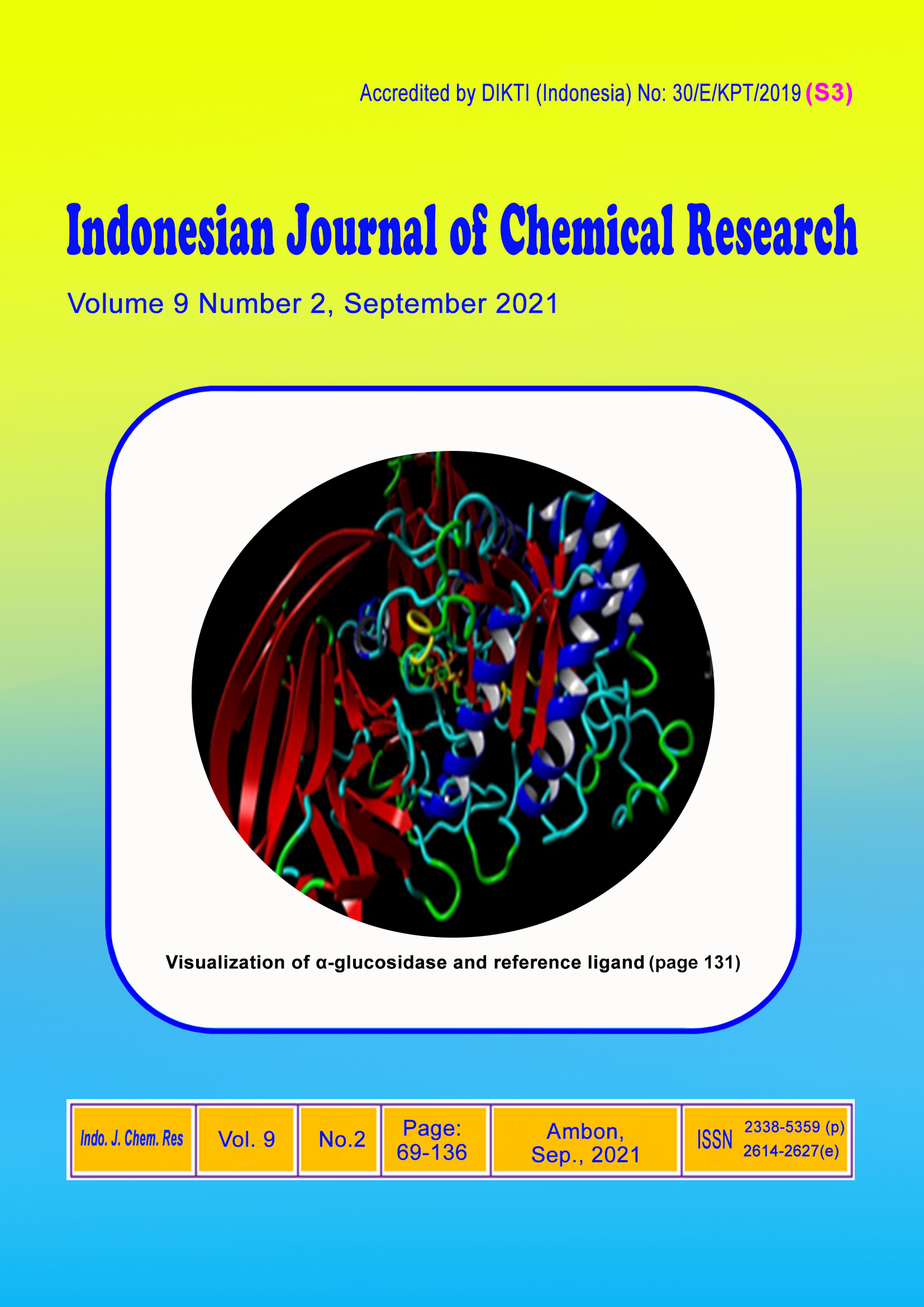Bioaccumulated Mercury by Several Types of Plants in Ex-Traditional Gold Processing Area, Gogorea Village, Buru Island
Abstract
This study examines the accumulation of metallic mercury by several types of plants in the traditional gold processing area in the village of Gogore, Buru district. The plants that were sampled in this study were guava, lempuyang gajah, and harendong bulu. These three plant species were chosen because they dominate the vegetation in the gold processing area. The analysis results showed that the lempuyang gajah was the plant that accumulated the highest mercury metal, namely in the roots of 16.79 ppm and the leaves of 15.03 ppm. Guava plants accumulated metal mercury in the roots and leaves of 11.73 ppm and 9.90 ppm, respectively. Meanwhile, harendong plants accumulated mercury in the roots and leaves of 2.59 ppm and 10.39 ppm, respectively. The BCF values ​​of guava, lempuyang gajah, and harendong bulu plants were 1.58, 0.41, and 0.39, respectively. Meanwhile, the TF values ​​of the three plants were 0.84, 0.89, and 4.01, respectively. From these results, it can be concluded that the three plants can accumulate mercury in high enough concentrations, so these three types of plants are categorized as hyper tolerant plants and accumulators.
Downloads
Copyright (c) 2021 Abraham Mariwy, Julita B. Manuhutu, Defany Frans

This work is licensed under a Creative Commons Attribution-NonCommercial-NoDerivatives 4.0 International License.
Authors who publish with this journal agree to the following terms:
- Copyright on any article is retained by the author(s).
- The author grants the journal, the right of first publication with the work simultaneously licensed under a Creative Commons Attribution License that allows others to share the work with an acknowledgment of the work’s authorship and initial publication in this journal.
- Authors are able to enter into separate, additional contractual arrangements for the non-exclusive distribution of the journal’s published version of the work (e.g., post it to an institutional repository or publish it in a book), with an acknowledgment of its initial publication in this journal.
- Authors are permitted and encouraged to post their work online (e.g., in institutional repositories or on their website) prior to and during the submission process, as it can lead to productive exchanges, as well as earlier and greater citation of published work.
- The article and any associated published material is distributed under the Creative Commons Attribution-NonCommercial-NoDerivatives 4.0 International License.






_copy1.png)










